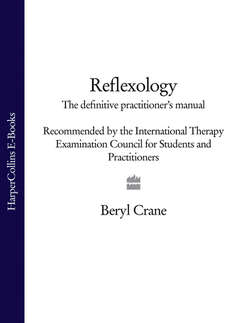Читать книгу Reflexology: The Definitive Practitioner's Manual: Recommended by the International Therapy Examination Council for Students and Practitoners - Beryl Crane - Страница 29
The Lung meridian
ОглавлениеThe Lung meridian (figure 2.8) is a Yin channel with 11 points. This meridian originates in the stomach and then communicates with the paired organ, the large intestine. As it ascends it connects with the relevant organ, the lungs, the first surface point on this meridian is above the nipple in the first intercostal space. The meridian then passes to the throat from the chest and clavicle along the radial border of the arm, to the middle of the elbow, back to the radial border descending to the thenar eminence and ends at the thumb on the lateral edge of the nail bed. This channel not only communicates with its paired organ the large intestine, but also associates with the kidneys and stomach. So points on this meridian (e.g. LU-10) will help fluid problems as well; it is ideal for oedema and retention of urine.
The nerve line arises from the lateral cutaneous branches of the first intercostal nerve, the medial and lateral pectoral nerves, median, radial, interosseus and cutaneous nerves of the arm, which then connect with the dorsal digital branches of the palmar digital nerve.
Figure 2.8 The Lung meridian (the dotted line shows how it connects with its paired organ, the large intestine)
Disorders of this meridian, with signs and symptoms, include: chills, fevers, hidrosis, anhidrosis; pain above the clavicle, or in the chest, upper back, shoulder, forearm, elbow, wrist and hand; headaches; any nasal obstruction, asthma, cough, dyspnoea; fever; sore throat; trigeminal neuralgia, or any twitches in the face. The thumb point is helpful for any cerebral congestion, insomnia, headache, or nervous anxiety.
